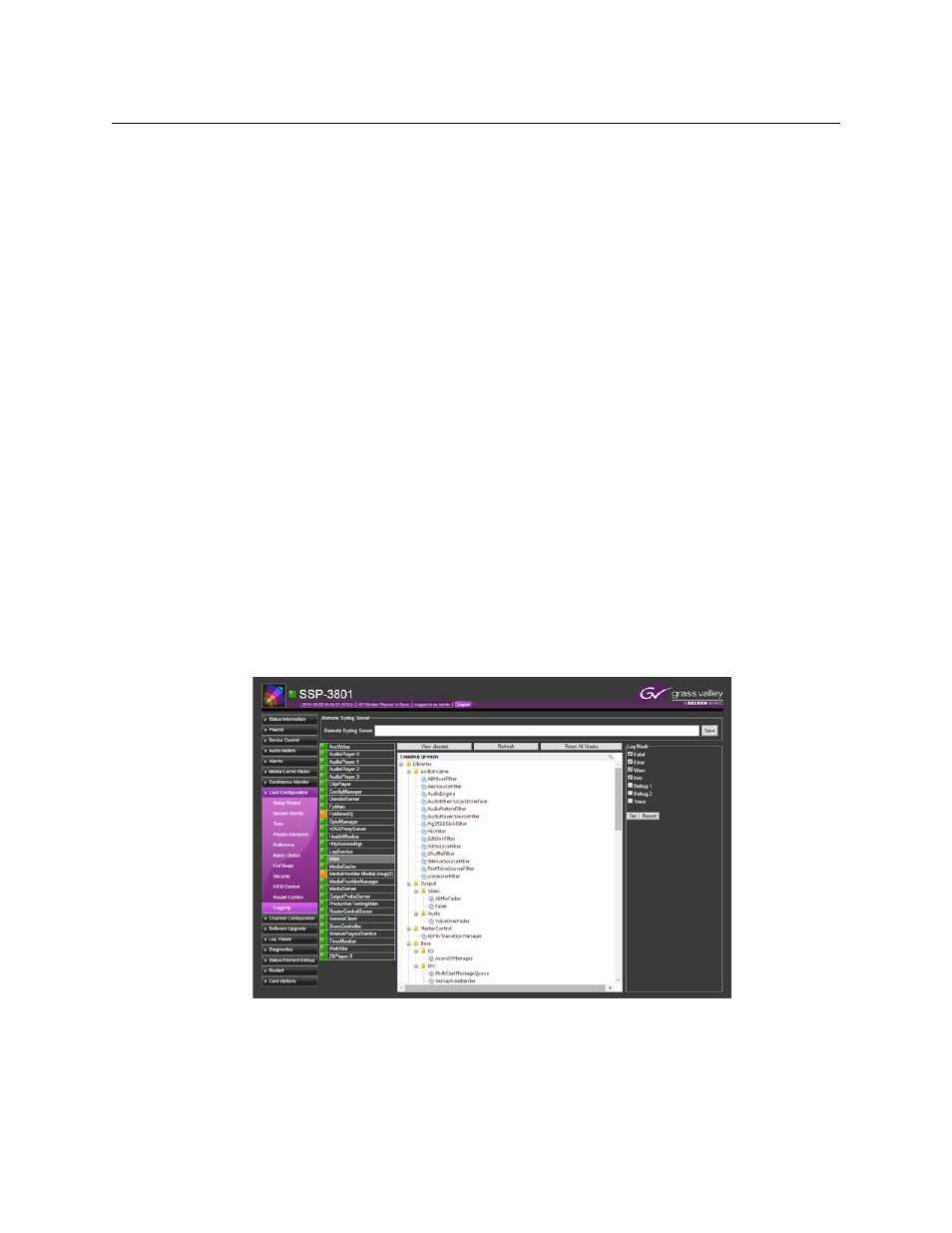Adjusting the logging depth – Grass Valley SSP-3801 User Guide v.1.3 User Manual
Page 68

64
Analysis and Maintenance
Adjusting the logging depth
• Debug 1 and 2: displays the first and second levels of debugging messages.
• Trace: displays debugging information that describes the execution of a process.
4 Select which processes to display in this log viewer from the Processes list.
5 Select which logs to display in this log viewer from the Loggers list.
6 You can select how much information is included in the entries by toggling the
following buttons. When the button is green, the corresponding information is
displayed. When the button is red, the corresponding information is hidden.
• Date: displays the calendar date when the entry occurred.
• Time: displays the time when the entry occurred.
• Process: displays the name of the process that is implicated in the entry.
• Severity: displays the priority level for each entry.
• Logger: displays the log type that is recording the entry.
• File: displays the file name associated with the process for each entry.
• Function: displays the command that is associated with the entry.
• Line: displays the line number that identifies the entry.
Adjusting the logging depth
When system events occur on the SSP-3801 card, they are recorded in system logs. The card
offers a number of different types of logs. The detail in the logs can be changed by
adjusting the logging depth.
To adjust the log depth:
1 Select Card Configuration > Logging. The Logging page opens.
Fig. 5-4: Logging page
2 From the list of log types on the left, click one you want to adjust. The classes for the
selected log appear in the center pane.
3 You can change how the classes appear in the pane by toggling the View classes/View
groups button: